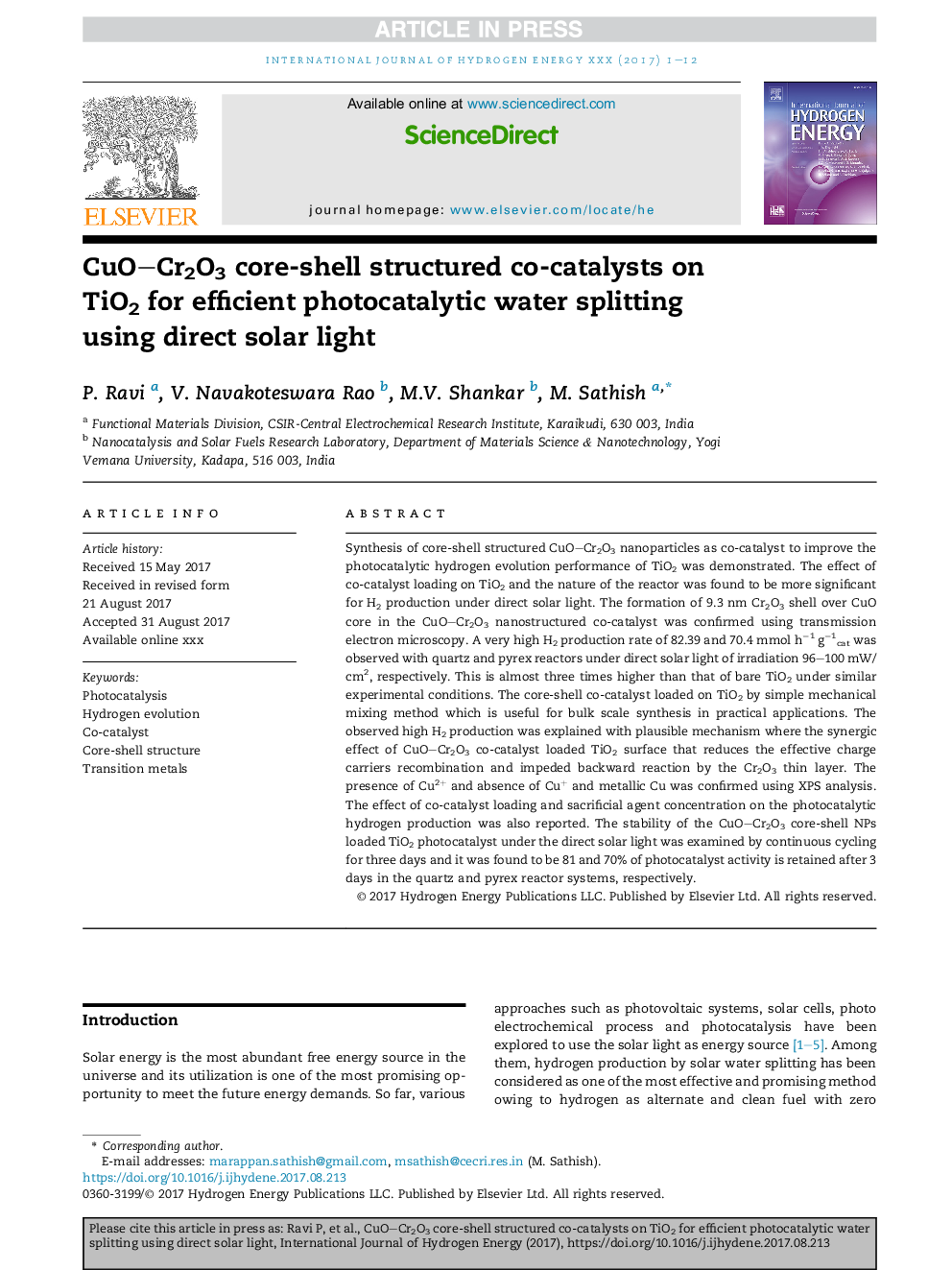| Article ID | Journal | Published Year | Pages | File Type |
|---|---|---|---|---|
| 7707507 | International Journal of Hydrogen Energy | 2018 | 12 Pages |
Abstract
Synthesis of core-shell structured CuOCr2O3 nanoparticles as co-catalyst to improve the photocatalytic hydrogen evolution performance of TiO2 was demonstrated. The effect of co-catalyst loading on TiO2 and the nature of the reactor was found to be more significant for H2 production under direct solar light. The formation of 9.3 nm Cr2O3 shell over CuO core in the CuOCr2O3 nanostructured co-catalyst was confirmed using transmission electron microscopy. A very high H2 production rate of 82.39 and 70.4 mmol hâ1 gâ1cat was observed with quartz and pyrex reactors under direct solar light of irradiation 96-100 mW/cm2, respectively. This is almost three times higher than that of bare TiO2 under similar experimental conditions. The core-shell co-catalyst loaded on TiO2 by simple mechanical mixing method which is useful for bulk scale synthesis in practical applications. The observed high H2 production was explained with plausible mechanism where the synergic effect of CuOCr2O3 co-catalyst loaded TiO2 surface that reduces the effective charge carriers recombination and impeded backward reaction by the Cr2O3 thin layer. The presence of Cu2+ and absence of Cu+ and metallic Cu was confirmed using XPS analysis. The effect of co-catalyst loading and sacrificial agent concentration on the photocatalytic hydrogen production was also reported. The stability of the CuOCr2O3 core-shell NPs loaded TiO2 photocatalyst under the direct solar light was examined by continuous cycling for three days and it was found to be 81 and 70% of photocatalyst activity is retained after 3 days in the quartz and pyrex reactor systems, respectively.
Related Topics
Physical Sciences and Engineering
Chemistry
Electrochemistry
Authors
P. Ravi, V. Navakoteswara Rao, M.V. Shankar, M. Sathish,
